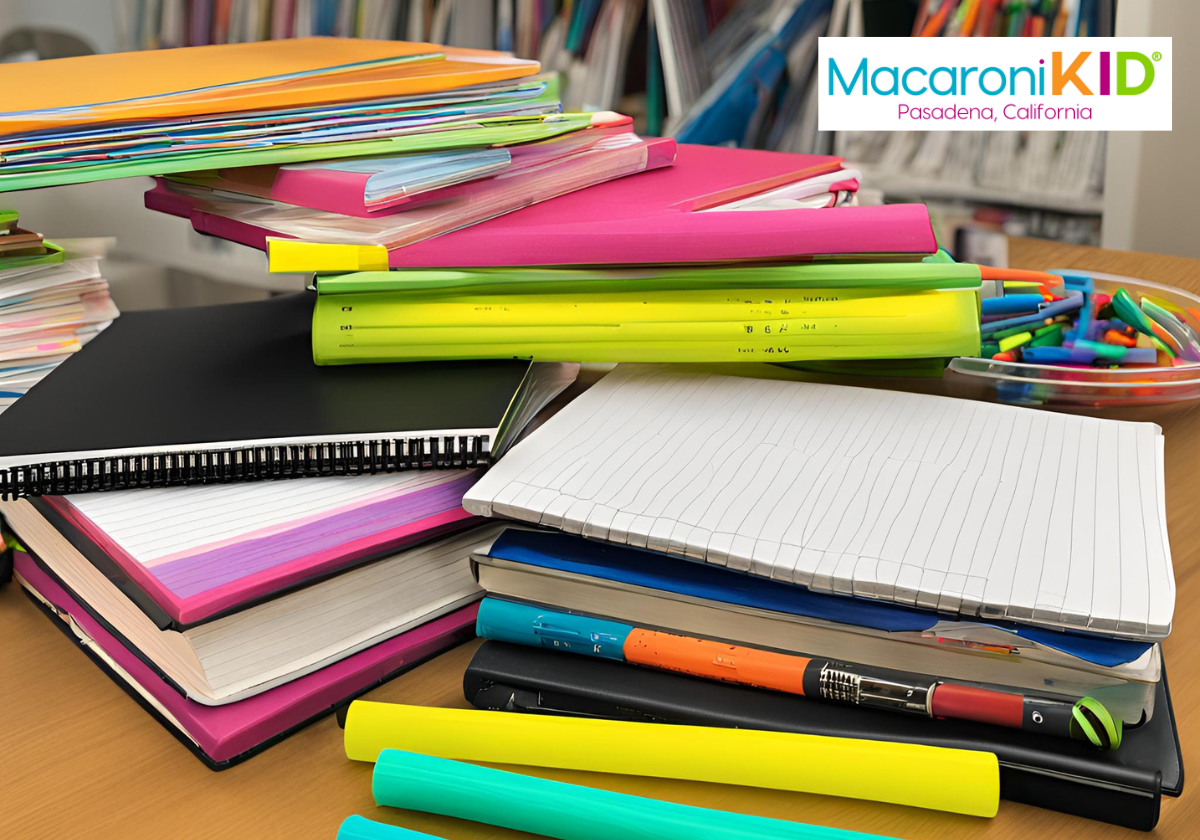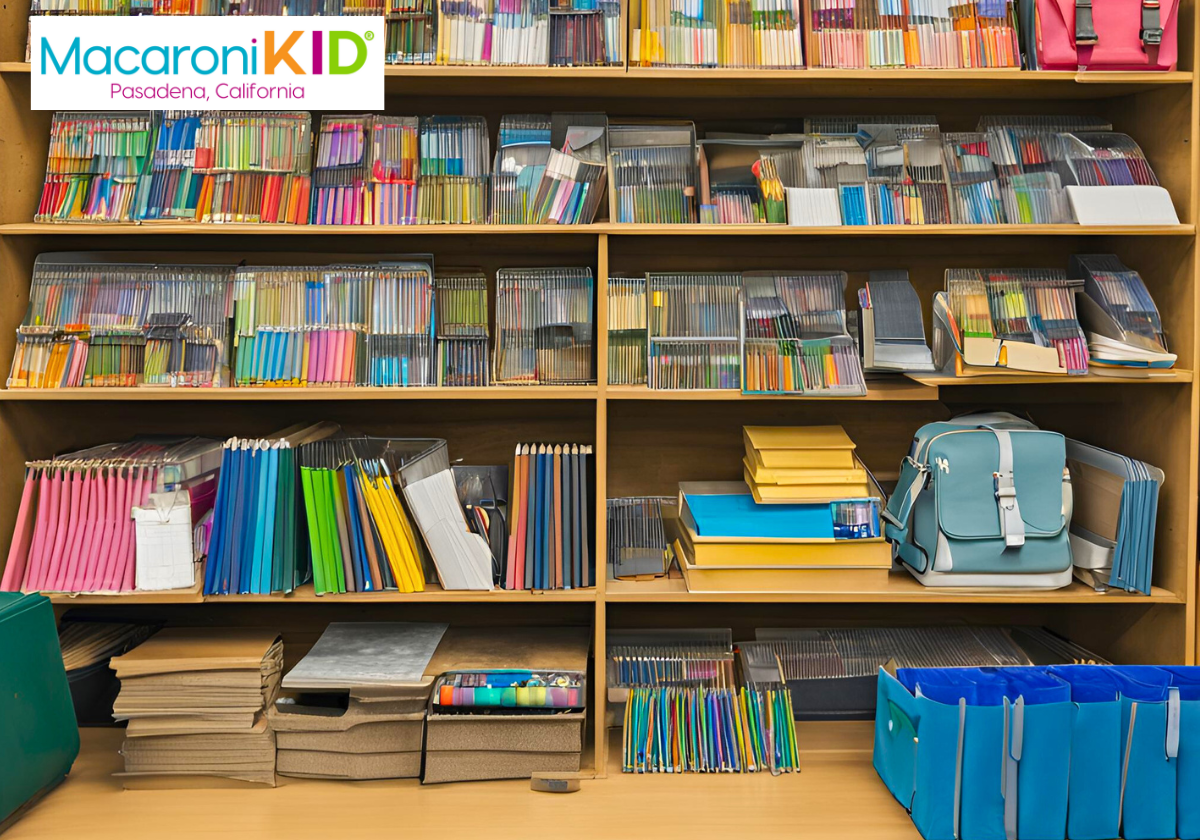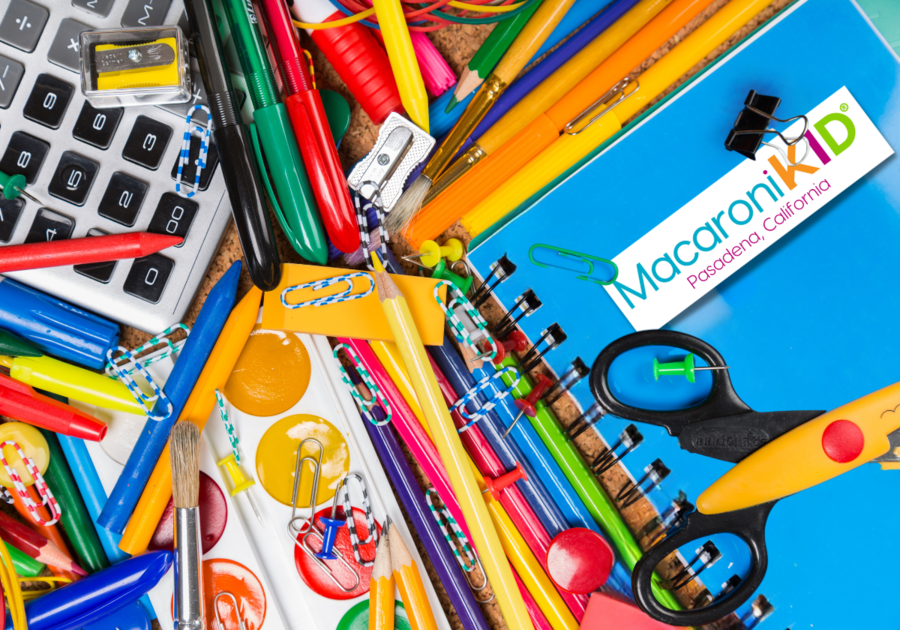To start the school year, most schools put out a long list of stationary items needed for your children. And it seems at the end of the school year, there are always some items that were barely used. We can reduce the waste by re-using the leftover items, being mindful about how much we purchase and using thrift shops where possible.
Thriftiness is a virtue. Teaching our children to regularly reuse good quality items instead of re-purchasing inexpensive flimsy new ones every year will serve them well in the future. If you treat it as a regular expectation to get more out of what you do buy, kids will naturally accept it. They will grow up being more strategic about what they buy and be less wasteful.
There are also several thrift shops in the area that regularly carry stationary items. School Supplies might not be what comes to mind when you think of thrift shopping, but you can pick up still-good 3-ring binders or packets of index cards whenever you find them throughout the year and save them for the following August. In doing so, you save money but also keep useful items out of landfills.
Below are several ways you can get more out of the items you buy, as well as ways you can spend less in the first place. |
|
How to Get More Out of What You Have |
Paper: Some kids take more notes than others. I’ve always noticed my son uses nearly no lined filler paper, but tons of graph paper. It’s just his style of learning. When the school year ends, you can easily tear extra lined paper out of half-used notebooks, using the perforation that is often next to the spiral or a ruler to tear a clean edge. The spiral binding can also be removed by snipping off the end and untwisting. If the extra pages aren’t already 3-hole punched, punch them and make a small (or even a large) pile of extra filler paper. This can be used in 3-ring binders for the new school year.
|
Binders: If they aren’t falling apart, 3-ring binders can often be used for a second, or even a third year. If your child has outgrown the pattern of the cover, you can cover it with a fresh sheet of contact paper in a color he or she prefers. The most economical way to approach binders is to pay slightly more for sturdy, good quality ones in solid colors and use them for several years.
|
Pencils: Many schools list an entire box of brand-new pencils for every child every year, but how many of those are actually fully used? A great way to be economical about it is to invest in a really good pencil sharpener to be used at home. An electric pencil sharpener is fun for kids to operate, last many years, and you only need one per family. Supply each child with one or two small hand-operated pencil sharpeners to keep in their pencil boxes. Encourage children to sharpen dull pencils as needed and keep using them until they are too short to hold comfortably. Short, stubby pencils are cuter and easier to store in a pencil case or backpack. You can even make it a family contest to use the same pencil for the longest time or have the shortest usable pencil.
|
Erasers: Because they are cute and inexpensive, it seems kids acquire far more tiny erasers than they can ever use. Stop buying erasers that are too small to comfortably hold between your fingers. Instead, buy erasers that are at least one inch wide and will last the whole year. Teach children to put erasers away in the same pocket or pencil case every time and use the same one or two over and over. The biggest reason erasers are tossed out in our household is because they are dirty and gross. I recently learned how to clean grungy erasers, so they are bright and clean. We skipped purchasing any new erasers at all this year, cleaning and reusing the same 3 erasers from last year. To clean graphite off old erasers, coat them in a few drops of vegetable oil, rub off the grime, then wash off the oil and any remaining stains with dish soap or all-purpose household cleaner. |
|

|
|
Composition Notebooks: Love them or hate them, composition notebooks have the pages sewn in. If they were halfway used, you can still tear out the back pages and trim them up for use as scrap paper. If composition notebooks are lightly used, though, you can neatly tear out up to 20- 25% of the book and reuse the rest. The front pages connect to the back pages, and they are folded over upon themselves. So they key is to remove as many pages from the back as from the front, then use a pin to pull any extra scraps out of the binding. The remaining middle pages will stay in place.
|
Book Covers: Decades ago, we used old shopping bags to make book covers instead of buying them. Reusable book covers are a great concept, but they are only helpful if you actually reuse them. Either go for washable ones in solid colors or themes you know will last or use the recycled materials type. If you make book covers out of white shopping bags from clothing stores, you can decorate them with markers to make them special. Or square up the store’s logo to make them cool… why not have a math book brought to you by Nike?
|
Personalize Plain Items: Buying folders and binders in solid colors is more economical because kids don’t outgrow the theme in a year or two. That doesn’t mean they need to be boring, though! You can personalize last year’s plain binder by adding a vinyl sticker. Cover over the label marking a folder for use in last year’s Language Arts class by putting a sports-themed sticker over the old label and using that same folder for this year’s science class. Next year, you can remove the old stickers with rubbing alcohol and put a new sticker fitting the current style.
|
|
| 
|
|
How to Buy Smarter |
Thrifting: Not every thrift store has a decent selection of school supplies. But a few in our area accept donations of gently used office supplies that can serve nicely for school purposes. Remainders Creative Reuse in northern Pasadena regularly carries 3-ring binders, packets of markers and highlighters, index cards, partially used or unused notebooks, calculators, rulers, post-it notes, pen refills, labels, and much more! Savers in Arcadia regularly carries 3-ring binders, partially used or unused notebooks, labels, rulers, desk organizers, bookends, lunchboxes, and more. Be sure to check the shelves in the middle of the housewares section as well as the hanging packages on the south wall for things like calculators, protractors, boxes of highlighters, index cards and a multitude of small items. Hit the thrift shops first to get the items you can, then head to your chosen supplies’ retailer. Then peruse the thrift shops and sales in the coming months to squirrel your finds away for next year.
|
Bulk Purchasing: Sometimes the least expensive way to go is to team up with other families and do a bulk order at Costco, Amazon, Walmart, or Uline. Four children (just two families with two school aged kids each) can easily use 6 to 8 binders, maybe as many as 16 if they are in middle school or high school.
|
Shopping Around: Not all quality is equal and the prices sure aren’t the same at various retailers. The local dollar store might have the lowest price, but if the quality is inferior, it might actually cost more in the end. So, scope it out first and share the info with friends. If you are at Target for something else, swing by the school supplies section to check out what brands they carry, if you’re scrolling social media while watching evening television, hop on over to an online retailer and compare prices for like-items. Once you’ve decided on the best place to shop, you can include the kids on what they think they’ll really use and their color choices.
|
|
|
|
|





